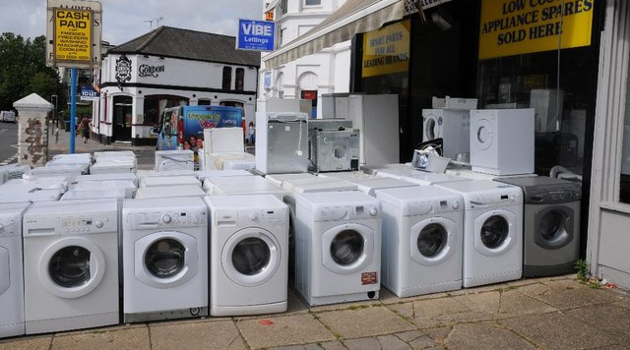I get offended when I hear people argue that Donald Trump is another Ronald Reagan. I’m not saying that out of animosity to the President. I also got offended when people compared Bush 41 or Bush 43 to Reagan.
I realize Reagan was not perfect, but I think he genuinely believed in free enterprise and he moved the country in that direction. Other GOPers, not so much.
That’s especially true on the issue of trade. Reagan’s goal was to expand markets. Trump, by contrast, seems inspired by Herbert Hoover.
So when CNBC asked for my thoughts on the President’s protectionism, I wasn’t overly optimistic.
Based on eight simple questions, I explained the economy-wide argument for free trade back in 2011. Simply stated, if it’s bad for prosperity for governments to impose taxes, regulation, and intervention on trade inside a country, then it’s also bad for prosperity for government to impose taxes, regulation, and intervention on trade that crosses national borders.
But maybe the case for free trade is easier to understand if we consider how various specific groups are harmed by protectionism.
Taxpayers – Tariffs are taxes. So when Trump imposes $13 billion of tariffs on Canada and $37 billion of tariffs on China, what’s really happening is that he’s increasing taxes by those amounts on American consumers. Trade taxes technically are paid by importers, but the real burden is borne by individuals, just as individuals bear the cost when a business writes a check for the corporate income tax.
Workers – The “seen” effect of protectionism is that a few jobs are saved in a certain sector. But because the economy-wide cost of saving those jobs is so high, the “unseen” effect of protectionism is that overall employment falls. To cite just one example, Trump’s proposed taxes on auto imports are projected to reduce net employment by 195,000-624,000 jobs.
Consumers – When tariffs are imposed, selected special interests are shielded from competition and they respond by raising prices. This is bad news for households. Consider the case of washing machines. In the opening salvo of his war on trade, Trump imposed higher taxes on imported machines earlier this year. This headline from Mark Perry at AEI shows the consequences.
Retailers – As trade taxes ripple through the economy, one obvious adverse effect is that stores have to raise prices, which leads to lower sales. But that microeconomic impact just part of the damage. The combination of trade taxes and higher prices also put a dent in household budgets, and this macroeconomic impact leads to less overall spending on other items.
Exporters – When Trump unilaterally imposes higher taxes on trade, other nations almost always respond with tit-for-tat protectionism. And when these other nations target American products, that necessarily reduces exports.
Manufacturers – One of the big buzz phrases in business is “global supply chains,” which is simply a way of saying that companies have developed intricate networks to ensure the best inputs at the best prices. Trump’s tariffs have disrupted these networks by raising the prices of certain inputs. But the damage isn’t just higher prices.
Investors – At the end of the interview, I said Trump’s latest protectionist measures were akin to going from 1 month pregnant to 3 months pregnant. Except we’re talking about Rosemary’s Baby, not a bundle of joy. At the risk of mixing my cinematic references, continued 1930s-style protectionism eventually could produce Chucky after 9 months.
Hmmm…., maybe I should stick to economics and let movie critics develop analogies.
Since investors were my last category of victims, it’s very appropriate that we conclude today’s analysis by looking at some passages from a very good columnby the Chief U.S. Economist for Morgan Stanley in the New York Times.
A protracted, escalating cycle of trade tensions has begun. In the latest action, the United States has proposed a 10 percent tariff on $200 billion in Chinese goods. …Even if all the proposed actions don’t go into effect,
prolonged uncertainty alone can have a measurable impact on economic growth, and we should not underestimate the risks. …Just the threat of trade actions, even if there is no follow-through, is enough to dent business sentiment and investment. …roughly half of the growth we are seeing now is a result of a side effect of trade tensions — “doomsday prepping.” Global companies are stockpiling raw materials, intermediate goods and finished goods before tariffs take effect and raise the prices of those goods.
But the damage of protectionism will show up in other ways as well.
While the most direct effects will likely come from retaliatory measures that dent American exports, those impacts are just a fraction of what should be considered. Economists also need to consider the indirect effects of tariffs on consumer demand. Of the first $50 billion of announced tariffs, less than 2 percent apply to consumer goods. So the spillover effect on consumer demand — tariffs passed on as higher prices to consumers — should be quite small. But consumer goods represent more than 30 percent of the latest round of tariffs…firms can absorb the tariffs and cut costs elsewhere, but labor is the largest line item, which means layoffs or slower hiring. …At some point, investors will start to question whether global supply chains can withstand the escalating pressures from multiple rounds of tariffs, and financial markets may start to react.
In other words, there are no winners in a protectionist battle. Except, of course, for the army of lobbyists who get fat contracts to manipulate the system. So the swamp wins, but the rest of us lose.
P.S. As I noted in the interview, I don’t buy the argument that Trump is using protectionism to fight protectionism.
———
Image credit: Philip Halling | CC BY-SA 2.0.



